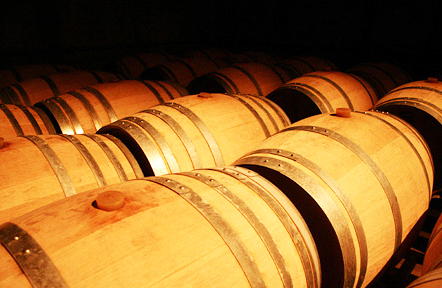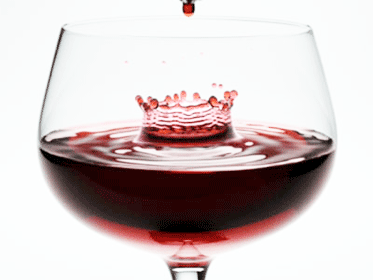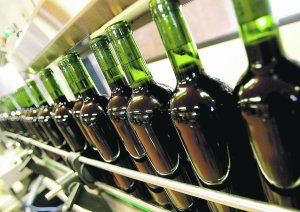Wine Production (Part II)
The first phases of wine making are the harvest of the grapes, the destemming (taking the leaves and stems off the berries), the crushing or pressing (to extract the must which will later become wine) and the fermentation (during which the yeasts consume the high levels of sugar present in must and transform them into ethyl alcohol).
If you're ever visiting Spain, you can't miss the opportunity of practicing wine tourism around the area,you'll be sure to learn this process first-hand from some of the best wine makers in Spain.
Maturation

After the fermentation process, the wine is transferred into a different vessel. The ageing can take place in stainless steel vats or wood barrels, normally made out of oak. The wood gives the wine a very distinct flavor, and sometimes splinters of oak are added to the wine in the cases to speed up the process. Wine in barrels tends to evaporate at a rhythm of between 2% and 5% its volume per year, which means an evaporation of 1 to 5 liters in a 225 liter barrel.
Oxygen plays a very important role in the wine's maturation inside the barrel, and especially affects the color of red wine. Wine making is risky business: too much oxygen and the wine can be too dark, too little and the color will be too light. Wines are normally air locked in the barrels, but since 1991 there's been a development in this technique: micro oxygenation, which consists of injecting tiny quantities of oxygen into the barrel. Depending on the material used for the ageing tanks, the wine will be affected one way or other. High quality wines are normally aged entirely in wood barrels, while less ambitious wines may share the ageing time between steel vats and wood barrels, or wood barrel and a bottle. It all depends on what the wine maker wants.
Clarification and Stabilization
In wine making, after the maturation comes the clarification, stabilization and filtration. These phases are meant to prepare the wine for its consumption by cleaning it and removing and solid particles or sediments left over. If these steps are not taken before the wine is bottled, it may spoil in the bottle sooner than it would have.
Clarification

With clarification, the aim is to remove any suspended particles left behind after the pressing and fermentation. A clear wine is one which doesn't have any sediments, looks bright in color and doesn't leave strange particles behind. A wine with a lot of suspended particles will look dull and less clear, and thus less appealing to the consumer. The suspended particles are normally leftover pieces of the skin, pulp or seeds of the berries, as well as colloids (microscopic particles which the human eye can't see without help) like gums, pectins, proteins, tartrates, active yeast or bacteria.
Clarification during wine making can be done in different ways: by letting them settle and then siphoning the wine, for example, although this process is very lengthy and can take up to several years. Another way of clarifying the wine is by filtering it through progressively finer filters until the wine appears bright and clear. However, many wine makers say this strips the wine of many of its properties and qualities. Flotation is another option: small bubbles of air are injected into the bottom of the tank and as they rise up the floating particles stick to them and are carried up to the surface, creating a froth that can be removed fairly easily. This method is usually applied before fermentation.
Stabilization
Wine be very unstable and reactive to changes in the environment, which is why stabilization is such an important part of the wine making process. Is a wine is not properly stabilized, it can spoil in the bottle during transportation or storage. Clarification is the first part of stabilization, as it removes the solid particles which cause cloudiness in the wine.
Cold stabilization consists in exposing the wine to freezing temperatures to encourage the tartrates to crystallize and precipitate out of the wine, so this doesn't happen once the wine is bottled and sold to the consumer. The crystallization of tartrates produces small crystals, like pieces of broken glass, and although they're harmless they can be undesirable for customers.
If the wine contains residual sugar, it can continue to ferment in the bottle. This produces carbonic gas which will make the wine sparkly or gassy when it's opened. These traits are only desirable in some wines like Champagne or Cava, but not in other wines like regular reds, whites or rosés. Further fermentation in the bottles is avoided by sterile filtration and bottling, to ensure no active yeasts remain. Another way is to inject the wine with sulfur dioxide and sorbic acid to inhibit the growth of yeast.
Bottling

Bottling is a fairly recent development in wine making and its conversation. It began to be carried out when making sturdy and cheap wine bottles became easier and cheaper. The primitive wine bottles were more rounded in shape, like the German bocksbeutel, but the shape evolved to the longer one common today so it would be easier to stack and carry them.
During bottling, a final dose of sulfite is added to help preserve the wine and prevent unwanted fermentation in the bottle. Once the wine is bottled, the opening is sealed with a cork. Natural cork is pretty common, but lately wineries have taken to closing the bottles with synthetic corks, which are cheaper.
Spanish Wine History
Spanish Wine Regions and DO
Spanish Wine Tours
Top Spanish designations of origin
Best Spanish Wines
Spanish Wine Production
Spanish Wine Types
Spanish Grapes
Spanish Sparkling Wine: Cava
Sherry Wine
Spanish Wine Cocktails
Spanish Wines in the World
Spanish Wine Prizes
Enotourism
Spanish spirits and liquors
Argentina Wines
Chilean Wines
Other sites